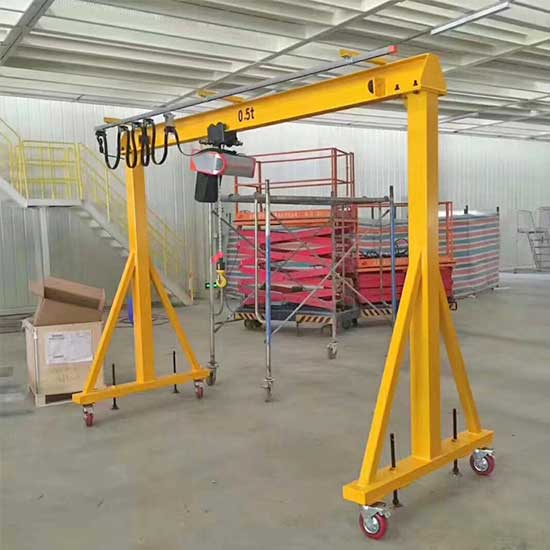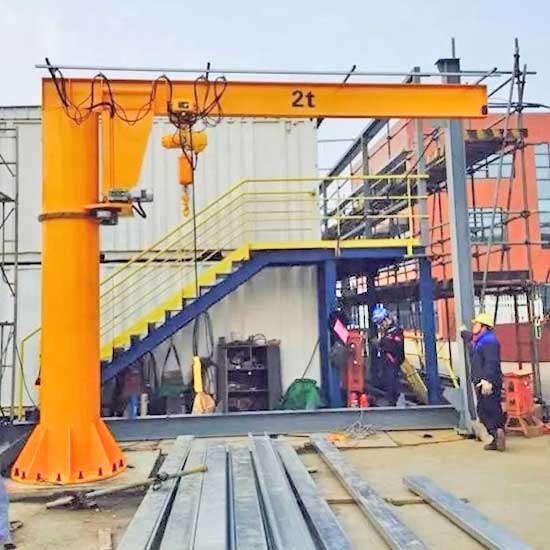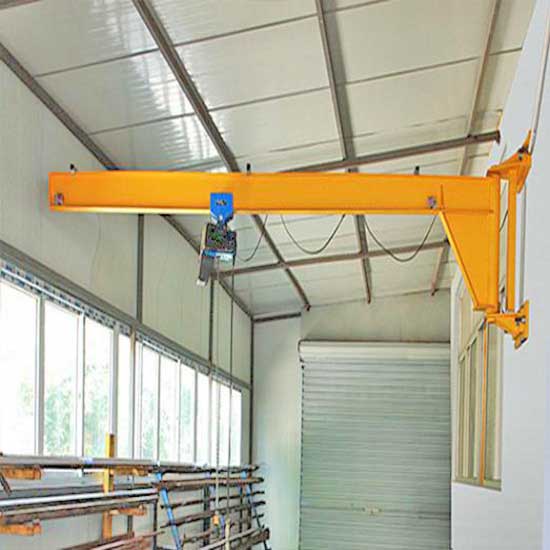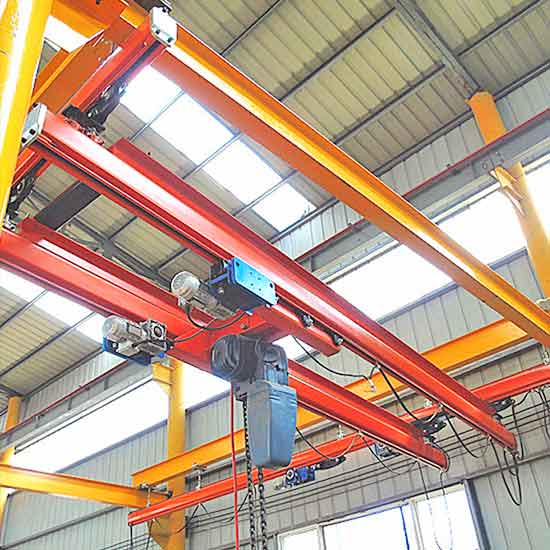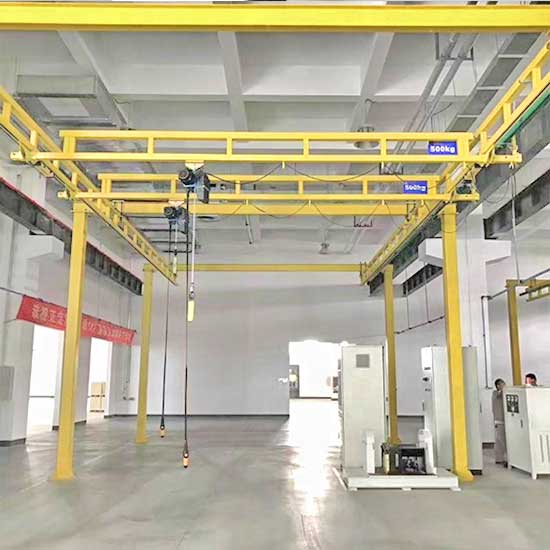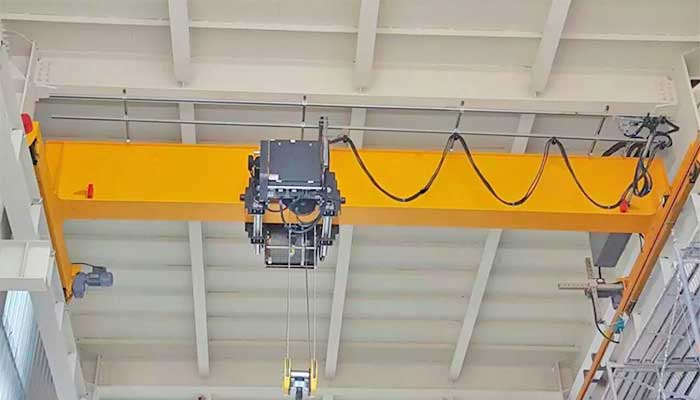
Workstation Crane Overview: Types & Uses of Workstation Cranes
Industrial capacity has increased at an unprecedented rate in the last few decades. This development is commendable; however, it would be unwise to overlook the advantages of automation and material handling.
However, without workstation crane workstations, this would not be possible. A workstation crane, as the name implies, is a stationary or mobile structure used to handle workplace materials. These structures are highly customizable and come in a variety of styles.
What Is a Workstation Crane?
Workstation cranes are overhead cranes that are primarily used in manufacturing facilities. These cranes have specific safety features to prevent accidents.
Workstation cranes are used in a variety of industries, including aerospace, farming, automotive, and manufacturing. Workstation cranes are commonly found in large warehouses.
A workstation crane can be installed on a wall or ceiling and used to lift a variety of tools or products. Workstation cranes are also frequently utilized to carry parts between different facility areas. Workstation cranes can also be used to lift and move heavy objects like pallets of products or gas tanks.
The Different Types of Workstation Cranes
Workstation cranes come in a variety of forms, each with advantages that make it suitable for a range of tasks at the workplace. Several of the most commonly used ones are listed below.
Gantry Crane
A gantry crane is a kind of crane that consists of a sizable, rectangular frame to which are fastened a number of spinning booms or arms. Gantry cranes are used to lift materials and machinery above the ground in workplaces such as factories, warehouses, and offices. Large objects are also moved by them across a flat surface.
Gantry cranes are frequently employed when a heavier weight must be lifted or transported over greater distances than a normal crane can. Hydraulic or electric motors are used to operate gantry cranes. Gantry cranes often have a significantly greater footprint than average cranes and consequently need more area to operate because of their size.
Jib Crane
A jib crane is a hoisting tool that uses chains, winches, and cable to move goods from one location to another. These type of workstation cranes are used in factories, ports, and other transportation facilities to lift materials and carry out various activities.
Jib cranes are frequently used to move heavy objects from one place to another or to lift heavy loads over great distances. Additionally, they are needed for delicate jobs like fixing window frames or taking objects out of a building.
A jib crane typically has one operator who must be able to precisely estimate distances, heights, and angles. To properly operate the jib crane while it is moving, the operator also needs firm hands and powerful legs.
Jib cranes come in a variety of sizes, which occasionally affects how well they work. While larger models could be more suited for moving heavy objects or operating at vast heights, smaller models are frequently utilized for short-distance lifting. Jib cranes can be tailored to your needs as well.
Bridge Crane
An overhead crane used to hoist people or large, heavy objects over great distances is called a bridge crane. Cranes used on overhead bridges may access locations where other crane types cannot. An overhead bridge crane may be more suited than a smaller, ground-based crane, depending on the work that has to be done.
Typically, overhead bridge cranes are powered by electricity or hydraulics. They are mounted on wheels and can be placed anywhere there is room for them. While some types can function anywhere on the ground, others can only operate in limited locations, like an elevator shaft.
The crane's height and position are controlled by the operator using levers, a joystick, or a remote control. An overhead bridge crane is typically much larger and heavier than a ground-based crane, weighing several tons. This makes it difficult to move and necessitates the use of specialized equipment to transport it safely.
Light KBK Crane- Ceiling mounted & Floor mounted
Workstation kbk cranes are frequently made of steel or aluminum. The workstation cranes, as was already indicated, weigh about half as much as an EOT and may therefore be mounted in a range of manufacturing environments.
They have a rolling resistance system that reduces the physical effort required of operators to operate the cranes or their hoists.
How to Properly and Safely Use a Workstation Crane
All workstations should have safety equipment, such as guardrails and safety railings, as well as a safe system for lifting tools. To ensure your safety when using a workstation crane, follow these guidelines.
There should be no one in the area where the crane is working. Keep people away from the area, even if they are not near the crane.
Before utilizing the crane, make sure everything is correctly fastened. All equipment must be securely fastened on both sides of the crane, and any loose things like electrical cords or fabric must be fastened.
When approaching the truck or hoist platform and moving about on it, exercise caution. Always be mindful of your surroundings and be on the lookout for potential dangers. Employees should always be able to see what is going on and have good lighting at their workstations.
Uses of Workstation Cranes
Workstation cranes outperform other production equipment thanks to its superior strength and mobility. Continue reading to learn more about the benefits of workstation cranes for your production area. After that, you'll be inspired to reduce unused space and increase output.
Workstation cranes, in short, move large loads. When everything is set up correctly, they may travel throughout the warehouse as needed, employing their excellent mobility to move from one load to the next. Although workstation cranes are industrial devices, they are far more user-friendly than beginners may realize. It's fortunate that they exist because they are excellent, adaptable equipment that offer crucial help in a processing and handling facility.
Workstation cranes are effective, high-performing equipment that have a wide range of applications. They are designed for usage in both indoor and outdoor environments, including maintenance, manufacturing, warehouses, garages, and workshops. It can be utilized outside at a freight yard, port, yard, docks, shipyards, etc. The following are some common locations for a light crane:
- Warehouse -Workstation cranes can be used to move boxes among several warehouse locations.
- Workstation -Depending on the application, workstation cranes may be used in the shipbuilding industry to move smaller components, materials, and loads. Cranes can facilitate the transportation of various ship components and speed the building process.
- Construction: Workstation cranes are used to move materials and heavy loads around construction sites, just like they are used in shipbuilding.
- Automotives: Workstation cranes can be used to move car parts such as doors, hatches, screens, engine parts, and so on. Cranes either transport smaller components to be installed on parts or transport an entire section to the next unit.
- Production: Workstation cranes transport components to and from production units. Because of the crane's lightweight design, it is typically used for smaller packaging, pieces, and so on.
How Workstation Cranes Work
The bridge crane needs to be mounted and secured to a ceiling structure or column system in order to be installed. How the crane is positioned will depend on the nearby roof structure. A mobility device is then installed.
They can move front to back and side to side, but not completely freeform.
Why You Need Workstation Cranes
Workstation cranes have several long-term benefits to provide. It will not only perform the task far more effectively, but it will also produce long-term cost savings for a variety of reasons.
Safety
It is difficult to carry huge goods, and even strong workers experience difficult times. But when humans carry big things, more than just ease of handling is at risk. Unnecessary heavy lifting may cause short-term mishaps as well as long-term wear and tear on the body.
Of course, falling down and using poor lifting techniques can result in harm. This may even lead to more issues because dropped objects and unexpected falls may frighten their coworkers and cause them to trip. This is worse for older workers because falling might have more severe repercussions for them than for younger workers.
Additionally, lifting hefty loads might harm the body over the long run. Continuous straining can cause additional tension on the muscles and bones, even though it may not be immediately obvious. In particular, diseases affecting the health of joints, including patellar tendinopathy, might result from this.
The worst result is actually quite fatal. Heavy manufacturing loads are more than enough to kill someone because they can readily shoot up to hundreds of pounds. Installing a workstation crane configuration will provide you additional incentive to buy a workstation crane right now.
Better Work Quality
Stronger hands are more stable, which is advantageous when handling things. There is less chance of products being destroyed because of how robust these cranes are. They don't have to work as hard to keep their equilibrium in order to accomplish a good job.
It seems sense that since people aren't machines, they aren't good candidates to handle really big burdens. Instead, you may concentrate your workers on jobs that require a full human operation.
Workstation cranes perform tasks faster, quicker, and more reliably than people ever could, despite the fact that they are not fully automated. Even though it temporarily reduces expenses, delaying the incorporation of workstation cranes won't benefit you in the long run. A workstation crane's initial costs can be more than covered in the long run by increased revenue brought in by higher job quality at your firm.
Efficient Workforce Utilization
Both understaffing and ineffective overstaffing are poor business practices. Invest in a workstation crane rather than adding more personnel to enhance the volume of boxes transported each day. Although the initial investment is high, your company will save money on operating expenditures for many years.
Forklifts and jib cranes are only two examples of devices that workstation cranes can replace or enhance. While multiple single-use equipment can create a commotion, a workstation crane will perform the combined task of all these machines while utilizing the most amount of floor space.
Workstation Crane Buying Guide
There are a few things you should think about while selecting a workstation crane. These include the kind of job you intend to accomplish with your crane, the workspace's total size and weight capacity, as well as any further specifications you may have for your crane.
For additional details about the crane that will be best for your company, get in touch with us. Our professional team is prepared to assist you.
Efficiency is important when it comes to a processing and handling facility. Workstation cranes have a significant, long-term impact on both output and cost, despite the fact that it could appear cumbersome to investigate a whole new system.
Workstation cranes are multifunctional workhorses, as we are a leading crane manufacturer in China. Their development could have a huge impact on both your employees and your bottom line. Check out our Workstation Cranes today to get a little bit closer to ideal productivity if you're interested in a more productive workforce.
